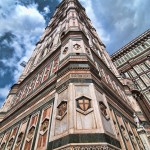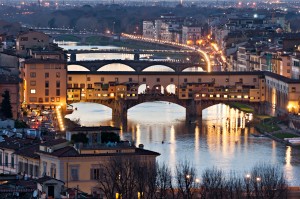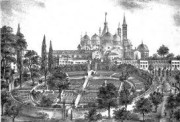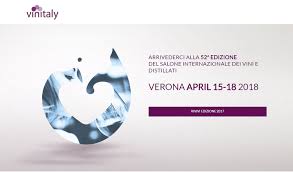Brief City’s History
The beginning of the history of Florence, from the ninth century BC, begins with the Etruscan community.This community, formed through the integration of some people from Asia, from Greece and from the area nearby, conquered the territories near Florence (Arezzo, Cortona, Fiesole). Past the time of the Etruscans, the area around Florence, like many other lands, came under the direct control of the Romans. Julius Caesar granted some lands around the river Arno to his veterans. These people settled there and formed the first colony called Fiesole. This colony became very rich thanks to the trade across the river and to an ancient road, running between Rome and northern Italy: the Cassia road.In 568 AD, after the decadence of the Roman Empire, Florence had to face some wars with the barbarians, until it came under the control of the Lombards, then also defeated by other barbarians, led by the brave Charlemagne. Charlemagne then converted to Christianity and granted a lot of land to the Pope, laying the groundwork for the next Papal States, which lasted more than a thousand years.In 814 AD the Pope crowned Charlemagne Emperor of the new Holy Roman Empire. Since then, a struggle arose between Popes and Emperors, Relative to who had the merit of having legitimized the power of the opposite. The Popes claimed to have legitimized the power of the Emperors, while the Emperors claimed the opposite.Throughout Italy, the supporters of the Pope were called Guelphs called, while the Emperor’s ones were called Ghibellines.The nobles ranged themselves with the one or the other depending on the convenience of the moment.The emperor, with headquarters in Northern Europe, in that period delegated his power in Italy to the Principles of Lucca (the Margraves), but in 1077 AD, their Contessa, very religious, Matilda of Canossa, changed its policy, siding with the Pope against the Emperor.The struggle between Popes and Emperors continued and ended up leaving power vacuums that helped create the first city-states. Florence was one of them.Its industry of textiles, made of wool purchased in England, washed into the Arno and stained with natural eastern dyes, made it famous in the World for its dyeing companies. While industry and commerce began to slightly decline, another sector grew strongly: the banking sector. This new financial industry invented some of the elements still in use today (checks, bills, insurance, etc …) and the first international currency: the Florentian Fiorino.This enormous wealth, created and accumulated by the Bankers, helped the City’s great artistic season: the Florentine Renaissance.The big bankers financed all the extraordinary artists who have painted, sculpted and designed works of art in Florence. Besides the artists, they also financed the Popes and other Foreign Countries. Some of them are still remembered in the names of streets, squares and buildings, as, for example, the Antinori, the Tornabuoni and many others.In Florence, they were also invented the guilds, the first Mercatorum Guild (1,100 AD) invented by traders; the Calimala Art, which replaced the first with more merchants inside, up to seven powerful Guilds ( Judges and Notaries Art of Exchange, Art of wool, etc …). Later, in 1289 AD, fourteen other guilds were born (Shoemakers, Bakers, innkeepers, Locksmiths, Apothecaries, etc …).The City government was deeply connected with the Guilds. The names of many components of some of the major and minor corporations were taken and put in eight leather bags. From these bags were extracted the names of nine persons, six from major Guilds, two from minor ones and one as Gonfalonier, external. These nine people elected the government that formed the Signoria, who remained only in charge for two months.The Government of the Lordship was then controlled by some external committees and a judge (the Podestà).The family by far the most important of Florence, known throughout the world, was the Medici family. More than just a family, was rather a true dynasty.The family’s history began in 1360 AD by John de ‘Bicci de’ Medici, whose son Cosimo the Elder (1389 AD) was one of the most famous members of it.Cosimo founded a university, built many public and private palaces, and many villas (called Medicean Villas), and funded some of the greatest artists of all time.The son of Cosimo, Piero de Medici (1416 AD), was not a valid member, and wasn’t remembered, but it was not so with his son Lorenzo (1449 AD), known as Lorenzo the Magnificent, who fled from a dangerous conspiracy planned by the Pazzi family and Salviati, then both died in the failure of the same; Lorenzo, as Cosimo the Elder, financed many famous artists, was greatly appreciated, and contributed to the splendor of Florence.Lawrence’son was Piero (1471 AD), violent and incapable. He handed Florence to the French king, Charles the eighth. The French domination, subsequently, was interrupted by Girolamo Savonarola (1452 AD), Prior of San Marco. Savonarola, however, was too fundamentalist, he forbade many things and imposed an almost monastic way of life that the people turned against him and killed him in 1498 AD.After Savonarola, was born a Republican government, led by Piero Solderini (1512 AD), and helped by the famous writer Niccolo Machiavelli. The Republic allied with France against Spain and the Papacy. They lost the war and the city returned to the Medici family, in a strange way, because the city was ruled by Pope Leo X, who was also a Medici, Giovanni de ‘Medici (1475 AD)Another Pope followed Pope Leo X, another Medici, Clement VII or Julius de Medici (1478 AD)In 1516 AD the Emperor of Austria and Spain, Charles V, conquered Rome and Florence and the Republic was temporarily restored.Incredibly, however, another Medici returned to the Government of Florence, he was Alexander de Medici (1529 AD), who married the daughter of Charles V. Alexander was later murdered by his male lover and since he had no children, a descendant of a secondary branch of the family, Cosimo de Medici (1519 AD), seized power, proclaiming himself the Grand Duke of Tuscany in 1570 AD and governing on certain Cities , remained , since then , outside the influence of Florence, like Siena.After Cosimo,other Medicis came, such as Francis I (1541 AD), Ferdinand I (1549 AD), Ferdinand II (1610 AD), Cosimo III (1642 AD) and Gian Gastone (1671 AD) who, being childless,convinced his sister Anna to give the Grand Duchy of Tuscany to the Grand Duke of Lorraine, later become Emperor of Austria, under the name of Francis I.The Austrian administration settled in Florence and made excellent reforms. After the Austrians, Florence was ruled by the French, who defeated them with Napoleon. The Austrians, however, returned to Florence when Napoleon was defeated in 1815 AD. In 1850 AD, a movement of Italian unification sent away the Austrians and in 1860 AD Florence passed under the control of the Italian Government, becoming his temporary capital, because in 1865 AD the Italian King Vittorio Emanulele moved from Turin to the Palazzo Pitti and the Parliament moved to the Palazzo Vecchio. In 1871 AD, the Italian Government moved the Capital from Florence to Rome.
The City
 Wandering in the Historical Center Florence is like moving into a veritable open air museum. Every Street, every Square, every Corner is fascinating, full of History and well preserved. The center is very lively, full of amazing bars and restaurants where you can sit down to have an Italian breakfast, or enjoy a good Florentian steak (the famous and thick, beef steak, cooked on the grill, original from this area), whilst drinking a glass of Chianti wine, opposite to the wonders of the Tuscan Renaissance. The Florentine dishes are the representation of the products of its land: olive oil, the fruits and vegetables, the grilled meats, the local cheeses, the cold cuts special, the egg pasta and the dense vegetable soups; do not forget to taste a little of everything … I will not regret it! The Tuscany was the cradle of some of the Italian Renaissance, from here they come many of the most famous artists of the period such as Leonardo, Michelangelo, Dante, Donatello, Vasari .. and many others. Florence was, therefore, both for his wealth than for his great love for art, beneficiary of many buildings and many extraordinary artworks that the whole world knows. Palaces, Plazas, Sculptures, Paintings, Tapestries, Silvers, Textiles … the Tuscan Renaissance is all that. Florence is divided into two main parts, divided by the Arno River, the northern part is the “town”, that has evolved from the ancient Roman colony, and that, for many centuries, has been consolidated and still retains almost all the major artistic wonders, and the southern part, also called “beyond the Arno” a little less urban, more green. This last part of the City developed at a later stage, in 1218 A.D., when it was first built a bridge called ” Carraia Bridge” which served as a liaison to a new, large working-class district, born with the factories of tissues. This bridge was followed by several others and the City started growing well on both banks of the great river. Once in Florence, as a bit ‘in every Italian City, the first thing to do is start walking slowly, looking at the historical wonders that you will find in every corner of your journey. In every Street and Square of the Historical Places, along it, your eyes will settle on buildings constructed through the ideas of the great architects of the past, and thank to the skills and the sweat of so many talented carpenters, engineers, masons, painters and sculptors, that, for tens and sometimes hundreds of years have spent all their precious energies to create these fantastic, and unique, artworks ! We list some of the buildings and places to visit when you arrive in Florence: The Piazza del Duomo: this square, situated in the Heart of the City Centre, retains four important buildings: the Cathedral of Florence, the Baptistery, the Steeple and the Cathedral Museum.
Wandering in the Historical Center Florence is like moving into a veritable open air museum. Every Street, every Square, every Corner is fascinating, full of History and well preserved. The center is very lively, full of amazing bars and restaurants where you can sit down to have an Italian breakfast, or enjoy a good Florentian steak (the famous and thick, beef steak, cooked on the grill, original from this area), whilst drinking a glass of Chianti wine, opposite to the wonders of the Tuscan Renaissance. The Florentine dishes are the representation of the products of its land: olive oil, the fruits and vegetables, the grilled meats, the local cheeses, the cold cuts special, the egg pasta and the dense vegetable soups; do not forget to taste a little of everything … I will not regret it! The Tuscany was the cradle of some of the Italian Renaissance, from here they come many of the most famous artists of the period such as Leonardo, Michelangelo, Dante, Donatello, Vasari .. and many others. Florence was, therefore, both for his wealth than for his great love for art, beneficiary of many buildings and many extraordinary artworks that the whole world knows. Palaces, Plazas, Sculptures, Paintings, Tapestries, Silvers, Textiles … the Tuscan Renaissance is all that. Florence is divided into two main parts, divided by the Arno River, the northern part is the “town”, that has evolved from the ancient Roman colony, and that, for many centuries, has been consolidated and still retains almost all the major artistic wonders, and the southern part, also called “beyond the Arno” a little less urban, more green. This last part of the City developed at a later stage, in 1218 A.D., when it was first built a bridge called ” Carraia Bridge” which served as a liaison to a new, large working-class district, born with the factories of tissues. This bridge was followed by several others and the City started growing well on both banks of the great river. Once in Florence, as a bit ‘in every Italian City, the first thing to do is start walking slowly, looking at the historical wonders that you will find in every corner of your journey. In every Street and Square of the Historical Places, along it, your eyes will settle on buildings constructed through the ideas of the great architects of the past, and thank to the skills and the sweat of so many talented carpenters, engineers, masons, painters and sculptors, that, for tens and sometimes hundreds of years have spent all their precious energies to create these fantastic, and unique, artworks ! We list some of the buildings and places to visit when you arrive in Florence: The Piazza del Duomo: this square, situated in the Heart of the City Centre, retains four important buildings: the Cathedral of Florence, the Baptistery, the Steeple and the Cathedral Museum.
1. The Cathedral, also called Saint Mary of the Flower (1296 AD – 1436 AD), is the symbol of Florence. It ‘a beautiful Church, ornated, outside, with polychrome marbles. Founded in 600 A.D. with the name of Santa Reparata, was then transformed to witness the tremendous growth of the City. The new industrial wealth, and the competition with the nearby cities of Siena and Pisa, gave it the impulse to build a stunning Church, which became the new symbol of the City. The project was initially entrusted to the Architect Arnolfo di Cambio, then, was later continued by Giotto, Brunelleschi and other Architects. The facade is rich in decors, but recent (1887 AD); the original one was, in fact, destroyed at the end of 500 A.D.. If the exterior is very rich in decorations, the large internal space ( the Cathedral is the fourth largest in Europe) is much more austere and simple. The magnificent and enormous Dome, built by Brunelleschi with an innovative, engineering method ( the Dome is composed of two casings, one, outside, with a thickness of about one meter, and an inner one with a thickness of about four meters. The masonry, herringbone, which dabbed the structure, and large cantilever beams, allowed the dome to sustain itself whilst it was being built) is, internally, frescoed with paintings by Vasari. From the Dome, you will be able to cast your gaze till the horizon, and over the whole City. Inside, you will find the wonderful paintings by Paolo Uccello, Vasari and Luca della Robbia (famous for glazed pottery). In the Cathedral of Florence there is also the tomb of the same, great Architect who designed the Dome and many other important buidings in Florence: Brunelleschi.
2.The Saint John Baptistery is perhaps the oldest building in Florence. It seems he was a great Roman Domus, dated 1 st century AD, then rebuilt and used as a church. The exterior decorations, commisioned by the Art of Calimala, are dating back to 1100 AD about. The Baptistery was the place where the newborns of the city were baptized and recorded. The most relevant parts of the building are probably its three great bronze doors, made by Andrea Pisano and Lorenzo Ghiberti. The South Gate is the work of Andrea Pisano. Within Its 28 panels in cast bronze, the artist tells the life of St. John the Baptist (the One who baptized) and, in the last eight, describes the eight basic virtues (Hope, Faith, Charity, Humility, Strength, Temperance, Justice, Prudence ). The North Gate is Lorenzo Ghiberti’s; within its 28 panels in cast bronze, the artist tells the New Testament of the Bible and, in the last 8 panels, describes eight Saints. the East Gate, also Ghiberti’s, is the most important, with its 10 large frames in cast bronze, tells the Old Testament of the Bible. Inside the Baptistery you notice the beautiful mosaics on a gold ground, made by some Venetian Masters, depicting Jesus, the Angels, the Hell and some Biblical scenes. Even the floors are sophisticated, with checkerboard mosaics, made in polychrome marbles.
3.The Bell Tower (1334 AD), like the Baptistery and the Cathedral, is decorated in polychrome marble. The Campanile, about 85 meters high, was designed by Giotto, then continued by Andrea Pisano and finished by Francesco Talenti. Giotto succeeded in completing only the first five floors of the Tower, leaving to the other two architects some structural problems, then solved with some smart construction techniques, such as the placing of four main pillars to strengthen the corners, and the opening of two windows on every side, at the third and fourth level, and a large window per face at the fifth level. The sculptures on the facades represent, from the ground floor to the summit, the human passage from the period of original sin (creation of Adam and Eve, the ancestors, the simple arts of the earth and human labor) to the Divine Grace (pictures of the 7 planets which , moving, are conditioning the human life; pictures of the 7 virtues that cause the human behaviour, pictures of the 7 sacraments which sanctify the human life, images of the fine arts that nourish the human spirit; some statues of Sibyls and Prophets)
4. the Museum Cathedral Opera. In Florence, now, many masterpieces such as statues and reliefs bronze made, are faithful copies of the originals, which, to be protected from the elements have been restored and brought into the Museum Opera del Duomo, where you can admire them in all their glory. Near the Piazza del Duomo, you’ll find more spectacular buildings such as:
5. Bargello Museum (1255 A.D.). This Palace was originally the seat of the Podesta. In 1573 A.D. the Medici Family abolished the figure of this supreme magistrate, and gave the Palace to the Chief of Police (Bargello). In 1865 A.D. the Palace was converted into a Museum. Inside its halls you will find unique sculptures by Michelangelo, Donatello and other great artists. In addition to the sculptures, the Museum also houses important collections of: Tapestries, Rugs, Silvers, Ivories, etc … .
6. Lordship Square, further East, near the River Arno, was for seven centuries the area where the Citizen Power showed itself. It ‘a great, and scenic, area, where most of the city festivals take place. Its irregular shape houses the Palace of Priors, which later became the Palazzo Vecchio ( the Old Palace ) and other beautiful buildings of the time. A few large statues, including the famous David by Michelangelo (one copy;the original is in the Gallery), stand on one side of the square. The beautiful Loggia della Signoria, an Arengario raised with gothic elements and classical elements, served to protect the Authorities from the weather, during public demonstrations, and for public harangues to the crowd.
7. the Old Palace (1299 A.D.) is a large Medieval-style building, originally founded to be the seat of the Priors’ Palace, who were the old rulers of the City Council of the Lordship. The architect who designed it was Arnolfo di Cambio. From 1300 A.D. to the end of the 1500 A.D. the building was expanded several times, until it reaches a considerable size. Its tower, also called clock tower, 94 meters high, was built in 1540 A.D., decentralized. It became the residence of Duke Cosimo I de ‘Medici, who created its last and greater expansion. Inside, three courtyards, at the ground floor, support the building. The first courtyard is without doubt the most beautiful; you will find it at the entrance, it have been built by the famous architect Michelozzo, in the Mannerist style, and beautifully decorated with paintings of Vasari; at its center there is a beautiful Fountain by Verrocchio. In the Palace there are many other great areas to visit, almost all beautifully decorated with scenes from the life of the family of Cosimo, with portraits and allegories of the Elements of the Nature (Water, Air, Earth, Fire). Some to be undoubtely mentioned are: the huge room of the five hundred (where the members of the Great Council gathered), the Study of Francesco I (richly decorated), the apartments of Eleonora (Spanish wife of Cosimo I), the Terrace of Saturn (Belvedere Balcony), the Audience Hall, the Sala dei Gigli the Hall of Geographical Maps, the Chapel of Saints Cosmas and Damian (patrons of the Medici family), and many other very beautiful rooms.
8. Uffizi Museum’s huge Edifice, began to be erected in 1560 A.D. by Cosimo I, to gather both the most important city magistrates and all the Administrative Offices of Florence; which had meanwhile become powerful, politically and militarily. The project was given to Vasari. Over time, the Medici began to put inside the building their wonderful collections of paintings and statues, and when the last of them handed the City to the Dukes of Lorraine, with the commitment, by them, to leave forever in Florence its artistic heritage, the Uffizi were finally transformed into a museum. Today they represent perhaps the most important museum of its kind in the world. The collections, contained in the Uffizi Museum, allow visitors to observe the transition from the Romanesque to the Medieval through the Renaissance, until reaching the late eighteenth century. In its 45 halls it’s possible to admire and understand the evolution of Italian painting: from the Byzantine style, iconographical and devoid of perspective, of Cimabue and Duccio; to that one, with a little more realistic perspective, of Giotto. Starting from the many famous painters, both Italians and foreigners, who from the 1300 A.D. onwards, began to paint prospectively (Masaccio, Fra Angelico, Paolo Uccello, Verrocchio, Peruginio, Signorelli, Leonardo, Mantegna, Bellini, Michelangelo, Parmigianino, Raphael, Tintoretto, Rubens, Van Dyck, Rembrandt, Titian, etc …), and passing through those who painted in the Manieristic style, as Raffaello and Parmigianino, the visitors arrive up to ” modern painters”, italians and foreigners, from the 16th century to the 18th century, as Caravaggio, Tiziano, Van Dick, Remnbrand, etc… . This unique museum is probably the most visited in Italy, and the in the whole World.
9. Orsanmichele Church (1290 AD – 1339 AD): a medieval building, fortress-like. Derived from the fusion of a garden, a Chapel and a Benedictine abbey. It ‘a large church with many sculptures of Saints on the outside, and paintings inside.
10. Saint Cross Church (1294 AD – 1385 AD): It ‘very, very famous for being the place where Galileo ( famous scientist ), Machiavelli (famous writer), Michelangelo (the famous painter and sculptor), Rossini (famous composer), and many other celebrated people are buried. Beside the Church there is the Pazzi Chapel, one of the finest buildings of the Tuscan Renaissance. Inside the Church there are beautiful paintings of Giotto and Luca della Robbia, and the Chapels of the members of a Medici family and Pazzi family
11. Saint Lawrence Church (393 AD about): This is perhaps the oldest church in Florence. And ‘dedicated to the first bishop of Florence, who is buried here. Destroyed, was rebuilt from 1059 AD to 1460 AD, with several alterations. It ‘a building harmonious, simple. Housed in the Old Sacristy there is the private chapel of the first known member of the Medici family: Giovanni de ‘Bicci de’ Medici, built by Brunelleschi.
12. Medici’s Chapels: highly decorated building, it houses three beautiful sculptures of Michelangelo. The Chapels, originally, had to house the graves of some important members of the Medici family; but then, they ended up to preserve some of them less important
13. Medici Ricciardi Palace: This Palace has been the headquarters of the Medici family for almost 100 years. Cosimo the Elder went to live there, and Cosimo I left it, when he moved to the Palazzo Vecchio. Today, only the Chapel of the Magi is remarkable, where the frescoes, by Benedetto Gozzoli, are truly exceptional.
14. Academy Gallery: important museum, created in 1784 AD by Grand Duke Peter Leopold of Lorraine. Here, visitors, among the many original pieces brought here to defend them from the weather, will see the great statue of David, by Michelangelo, carved from a single block of marble, after three years of work.
15. Santa Maria Novella Church ( Holy Mary new) (1246 AD – 1360 AD): Second perhaps only to Holy Cross Church in importance, is a very broad Church. The building is in Gothic style. The facade, instead, has a more classic style, having been rebuilt in 1470 AD by Giambattista Alberti. Internally it is meritorious the fresco by Masaccio, representing the Holy Trinity, where you can see the mathematical proportions used in the composition, with a three-dimensional effect. In the Strozzi Chapel we find the frescoes by Lippi; in the Tornabuoni Chapel we find the Ghirlandaio frescoes; in the Gondi Chapel we find the Brunelleschi frescoes, in the second Strozzi Chapel we find the frescoes by Nardo di Cione, and finally, in the Great Chapel of the Spaniards (used by Eleonor, the spanish wife of Cosimo the first) we have the frescoes by Andrea da Firenze.
16. Holy Trinity Church (1092 AD – 1330 AD about): The style is Gothic, with the exception of the facade, remodeled in the Mannerist style, much later, in 1593 AD , With parts dating back to 1100 A.D.
17. Davanzati Palace (1330 AD): Belonging, at the beginning, to the Davizzi family(rich merchants of wool), then, from 1578 AD it passed to the Davanzati family, up to 1838 AD, when it has been converted into apartments to the early 900. Even today, its appearance is typically medieval. It Recalls the oldest Florence. You’ll find old warehouses for supplies, reinforced doors, a well in the courtyard, small windows to pour down the molten lead. The interiors are very nicely painted (hall of parrots, peacocks hall). There is also a major bathroom, a real rarity for the period.
18. Ponte Vecchio Bridge is a wide bridge over the Arno river.Its name and beauty has made Florence famous throughout the world. in its location, where the river is narrower, probably already existed a wooden bridge, at the Etruscan’s time. The Romans made pass the cassia road through this bridge, in 1117 AD. During the centuries, some floods destroyed several version of the bridge, until the final structure was built in strenghtened stone, in 1345 AD. Outside the walls of the buildings, built on the bridge, there weren’t windows, to be more defensive.internally, instead, people swarmed around the many shops, where it was possible to buy meat, fish and tanned hides. In 1565 AD Vasari, on the order of Cosimo I de Medici, planned and built a covered walkway that, since then, run along the bridge, passing over the shops level, and leading the people across the river, till Pitti Palace.
19. Pitti Palace was built in 1458 AD by Luca Pitti, a famous banker, rival in business with the Medici. The building of the Palace was an act of force against the rivals; but the construction cost became too high for him, forcing him to sell it, ironically, just…to his enemies, in 1549 AD. the Duke Cosimo I° bought it for his wife, Eleonor, by then tired of Old Palace. It was connected, via a walkway over Ponte Vecchio, to Uffizi, headquarters of the powerful family. Later the Palace passed to the Dukes of Lorraine, then to the Savoia who expanded it enormously. Today it houses wonderful collections of paintings ( Raphael, Titian, Caravaggio, Rubens, Van Dyck, etc…), silvers, ceramics, clothings and carriages.
20. Boboli Gardens is the largest and most beautiful Park in Florence. and one of the most important and spectacular italian gardens. Located on the back of Pitti Palace, with its beautiful fountains, its wide avenues bordered by cypress trees, its pond with the islet in its centre, its amphitheatre and its caves, is a great place full of quiet and charme.
21. Brancacci Chapel ( 1423 AD ), located next to Saint Mary of the Carmines Church, was required by Brancacci, a wealthy silk merchant, who wanted it painted by Masaccio, Masolino and Lippi ( Masaccio’s teacher). The frescoes, representing Biblical scenes, survived until today despite their Maecenas was exiled by the Medici familiy.
22. San Miniato al Monte Church (1018 AD – 1207 AD) is placed at the edge of the urban area, on the hills of Florence. The Church is Romanesque and is dedicated to San Miniato, a martyr killed by a Roman Emperor and buried in the Church crypt. The facade, much decorated, is similar to those of Santa Maria Novella and of the Baptistery. The interior is very ornated, with very beautiful floors. The Chapel of the Cardinal of Portugal, beside the Church, houses the tomb of the grandson of the King of Portugal.
23. Other places to visit in Town are:
Santissima Annunziata Square(1420 AD – Brunelleschi).
The Hospital of the innocents, an ancient City orphanage (1445 AD – Brunelleschi).
The Archaeological Museum, with collections of Etruscan Art, Roman, Greek and Egyptian.
The House of the Poet Dante Alighieri, author of The Divine Comedy.
The House of the sculptor Michelangelo Buonarroti.
The Bardini Museum (Private Museum of Art ).
The Central Market (typical indoor market of food and wine city, full of stalls and kiosks where they sell cheeses, meats, fruit, fish, pasta, olive oil, vegetables and many other specialities






